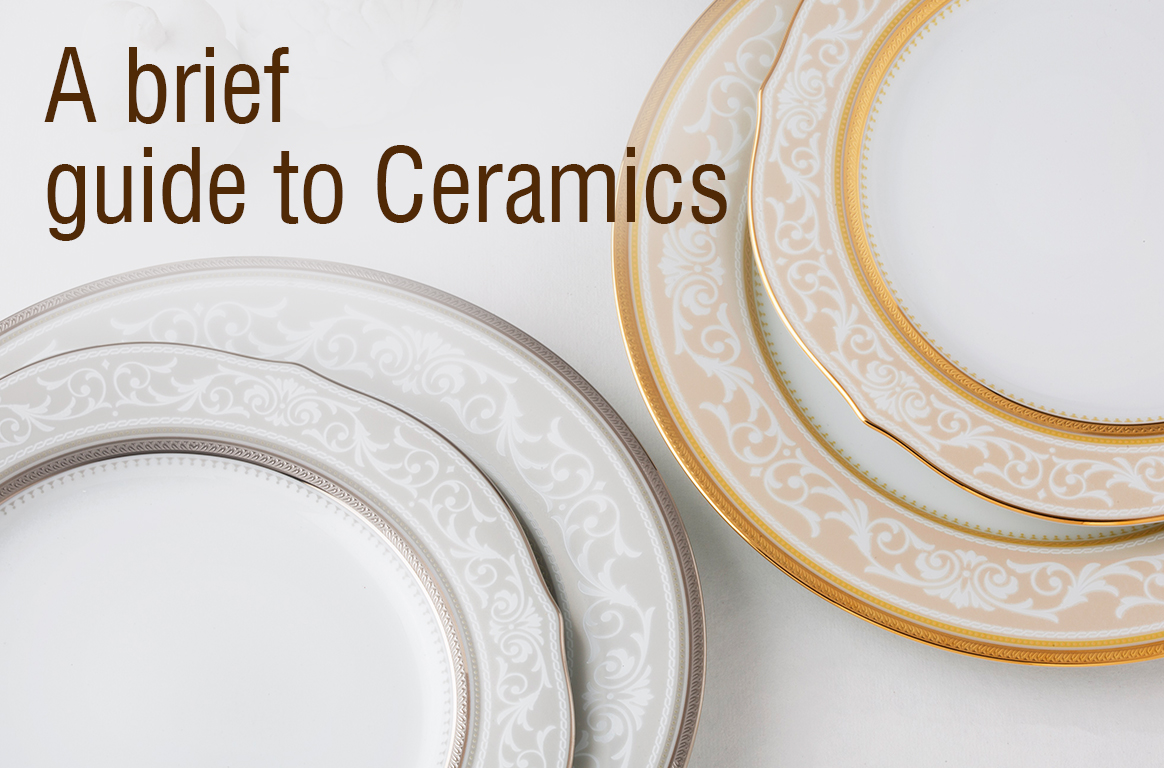Ceramic - A general term that encompasses crockery made from a clay based mixture and hardened by heat/heat-treated. Ceramics though, are divided into a number of categories of varying qualities and characteristics.

While Earthenware and Stoneware may be considered the more… ordinary kind of ceramic and while both are opaque (compared to porcelain which can be considered translucent), there are some differences to be aware of.
Stoneware is harder, stronger, extremely durable and more temperature-resistant than earthenware and is often used for kitchen items, such as casserole and oven dishes. It tends to be much heavier than earthenware and if chipped is dark and gritty inside.
Earthenware is sometimes used for utilitarian dinnerware, as it can be decorative like porcelain (without the fine quality). Tagines and terracotta pots are a few examples. If chipped, it appears white and chalky.
When thinking of luxury Crockery, Porcelain and Bone China are the first and only two that spring to mind. But it must be noted that even these two and their qualities can vary widely.
Hard-paste or true porcelain is distinguishable by the use of kaolin (or China clay) in its composition, along with feldspathic rock. Having been first produced in China (hence its alternate moniker) in the 7th and 8th centuries, it was finally introduced in Europe around 1709. Due to its translucency and delicacy (it can be made to be very thin), porcelain is highly valued and sought after. It is also non-porous making it suitable for food and dining use.
Limoges porcelain is the most respected porcelains in the world. This porcelain is very well known around the world due to its whiteness and the kaolin also makes it very hard and strong.
Soft-paste porcelain first appeared in Europe in 16th century Florence as Europeans attempted to discover the secret of the East’s designs by adding extra components such as powdered glass. The most desirable soft-paste porcelain to be created was fine bone china which originated in Britain in the 18th century.
Bone china is made with China clay, China stone and the addition of bone ash. With these ingredients in the mix, the material gains greater strength and translucency, meaning it can be made thinner without loss of durability.
Fine bone china is now produced by mixing hard-paste porcelain with bone ash. The quality of bone china is dependent on how much bone ash is included in its composition. As a general rule, nothing that has less than 30% bone ash should be accepted. Because of its durability – the result of a combination of hardness and density – bone china is often chosen for luxury table services. The addition of bone ash also produces its characteristically creamy white hue.
Both hard-paste and soft-paste porcelain are fired at much higher temperatures than stoneware and earthenware giving them their translucent qualities.
As classical as plain white services are, they still count as one style of dishware. In the world of fine dining, there is no dearth of colourful, patterned and textured designs, each of which is set in place with a glaze (a coating that seals and protects the designs and makes the piece non-porous) of a sort.
The key differences between the glazes for hard and soft-paste porcelain is that for hard-paste porcelain, the glaze is fused to the body by the high firing temperature while the soft-paste glaze is fired at a lower temperature than the body and sit on it as a distinct layer.
The glaze also split the special/decorative finishes into underglaze and overglaze. As seems literal, underglaze refers to the designs where the pattern and colours are under the glaze and are thus protected by it. Overglaze refers to those pieces which are painted on top of the glaze.